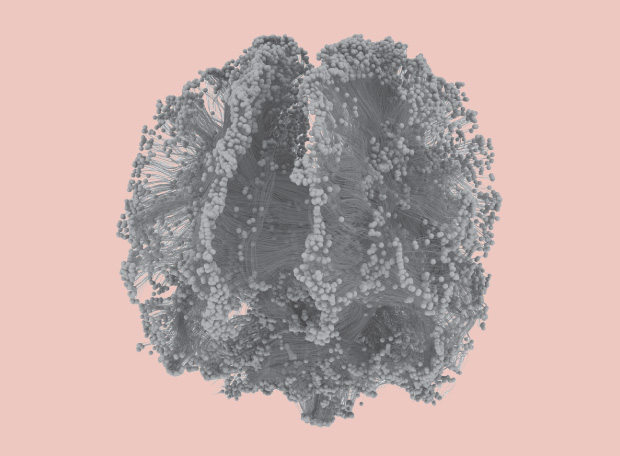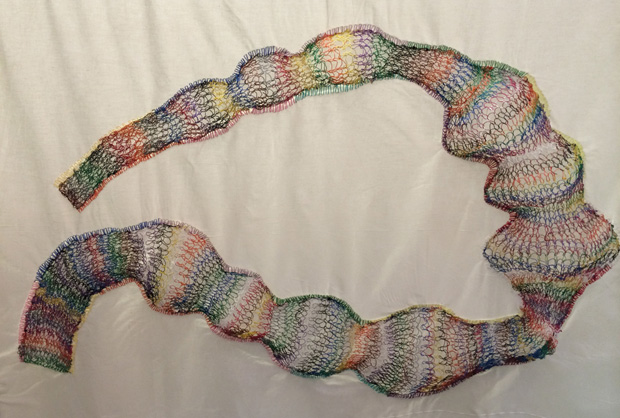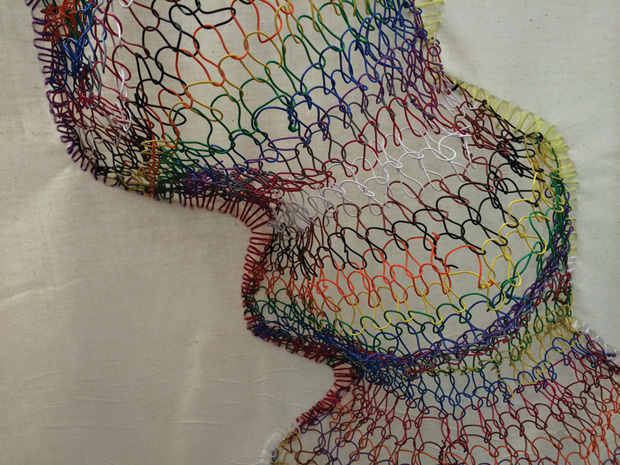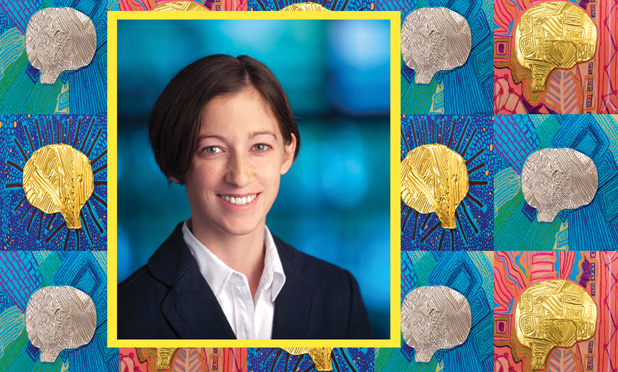Here’s the drill. Upon waking, count down from 100 to one as quickly as possible. Next, recite the alphabet, giving each letter a corresponding word partner (A, antler; B, bargain; C, cartoon, for example). After that, crank out several lists, numbering each of the items: 20 men’s names, 20 women’s names, 20 food items, 20 words beginning with the same letter. When you’re done, close your eyes, count to 20, and open them. Your mind, according to Mental Aerobics: Exercises for a Stronger, Healthier Mind [1], is now warmed up and ready to face the day.
Alphanumeric lists as leg warmers for your brain—the idea being that you can exercise your brain to greater fitness. This belief that we can pump up our minds just like we do our biceps didn’t come and go with the aerobics happy 1980s. Today, brain-training apps and programs like Lumosity (a decade after forming, Lumosity reported 35 million users and, at one count, was downloaded upwards of 50,000 times a day [2]), CogniFit, CogMed, and Jungle Memory proliferate, suggesting that people continue to believe—and buy—the promise that playing games, memorizing sequences, and doing verbal drills can boost mental performance and keep Alzheimer’s at bay.

People buy into the idea presumably because they believe there’s some science behind it. “Download our claims and evidence,” CogMed encourages website visitors. “We are Science,” CogniFit brags, keeping it simple. But earlier this year, the Federal Trade Commission sued Lumosity for making false or unsubstantiated claims—“for simply [not having] the science to back up its ads” [3].
So what does science really say—can brain training make us smarter? Danielle Bassett may be one of the best researchers to ask. Bassett, a physicist by training, is changing neuroscience by applying network science. Using the same graph theory and complex systems concepts that make sense of networks as various as the Internet and the social dynamics within a first-grade classroom, Bassett is opening up a nuanced, complex window onto brain structure and function. In her current role as an associate professor at the University of Pennsylvania’s School of Engineering and Applied Science, she has emerged as a leader in the rapidly developing field of dynamic network neuroscience. Where traditional approaches to brain imaging focused on discrete regions of the organ and how those mapped to different cognitive functions, Bassett uses network theory in conjunction with diffusion imaging to draw out the interconnections and interactions among parts of the brain (see, for example, Figure 1). She’s showing us, in effect, how the brain talks to itself.
A Movie-Map of the Brain
Bassett’s research is unveiling how different brain areas (nodes and hubs in network theory parlance) signal to each other. It’s a system-level view of the brain that has provided insights about a range of cognitive events, from epileptic seizures to multitasking to how quickly—or not—people learn. Though the metaphor is imprecise, this picture of the brain is no snapshot; it’s more like a movie of a car driving from point A to point B across a landscape with many interlinking roads. This movie-map of brain pathways is becoming more richly detailed with each new study out of Bassett’s lab, showing that the routes, or signal patterns, change and reconfigure according to task, over time.
In 2014, Bassett was awarded a MacArthur Fellowship in recognition of her research contributions to the treatment of brain injuries, disease diagnostics, and therapeutics, as well as to our understanding of learning. In recent years, for example, she has identified the brain mechanisms behind the flexible versus rigid brain reconfiguration that takes place when a person switches between tasks, showing that those with greater flexibility have greater fluidity of thought and performance.
So what does Bassett think? With these new insights into cognitive flexibility, will we be able to train our way to greater brain fitness? “I’m going to take off my scientist cap for a second and say that I doubt that it’s drills,” Bassett replies. “I think that the things that are going to make you have a more flexible brain are challenging yourself to be imaginative and to be curious, and to explore your world…, training exploration rather than training a specific ability.”
You Actually Can Think Too Hard
Bassett’s own explorations have traveled the motor and visual regions of the brain, analyzing images to see how they are integrated and which parts of the network get recruited to help perform a certain task, such as playing a ten-note finger sequence [4]. She’s found that the more we practice something— a piano arpeggio, for instance—the less integrated and more autonomous the motor and visual regions become (which corroborates a learner’s feeling of not having to think as much about playing a sequence when finger movements become automatic). While all learners experience this increased alacrity with enough time and practice, it’s the really fast learners, the ones with more cognitive flexibility, who exhibit a stronger tendency to disengage certain regions of the brain more quickly. You could say that slower learners are overthinking a given task in engaging the executive function of the brain (the region involved in active decision making and higherorder thinking) past the point where they need it. Using too much of your brain can get in your way. It may also explain why children are quick learners: the executive system of the brain, so good at deliberation, is the last to fully develop.
Complex Tools for a Complex Organ
This question of how the brain changes over time—not just seconds or minutes, but over years—factors into another area of Bassett’s work. In collaboration with psychiatrists at the University of Pennsylvania’s Brain Behavior Laboratory, Bassett is investigating the growth of the brain as youngsters pass through childhood into adolescence, looking specifically at the development of functional networks. The study seeks to establish what normal development looks like to identify abnormalities in the functional networks of adolescents as they become adults—a crucial phase in brain development and a time when disorders such as schizophrenia first manifest (this study, funded by the National Institute of Mental Health, tapped a large data set gathered as part of the Philadelphia Neurodevelopmental Cohort, led by principal investigator Raquel E. Gur. Researchers analyzed a sample of 1,600 children and young adults, aged 8–22 [most brain development studies involve 30–50 subjects]; they tracked the normal trajectories of brain development in the 780 subjects who were relatively more healthy [5]).
Ted Satterthwaite, a psychiatrist specializing in neuroimaging of brain development in psychiatric disorders, explains how Bassett’s contributions allowed their team to get a better grasp on the data. “When you’re talking about these data sets, there’s hundreds of thousands of voxels per subject that are sampled hundreds of times in a time series. You have these complex networks and you have multiple data types. You’ve got a large sample. The traditional way in the field to approach this problem is to say, ‘We’re going to look at each one of these measures independently.’ To be able to work with someone who can say, ‘Okay, I’m going to be able to pull out networks and…instead of [measuring] 100,000 things independently, we’re going to look at 13 things that are easier to see and more interpretable’—that is a huge advantage.”
Bassett’s network science expertise is, in simplified terms, the right tool for the challenge. “These are complicated problems,” Satterthwaite emphasizes. “If you want to study a complex network and how it’s changing and developing in a disease, it is…an amazing opportunity to be able to work with the best network scientist,” he says about the opportunity to collaborate with Bassett.
Control Theory to Target Brain Stimulation
Bassett has also brought new precision to research on brain stimulation for treating neurological disorders or enhancing human performance. Recently, Bassett has been using control theory (e.g., the way that robotics or airplanes are controlled) to target noninvasive brain stimulation [6], [7]. Stimulating one brain region to treat a psychiatric condition can affect other areas linked to that region. The question driving these studies, says Bassett, is “where would you stimulate to help the person the most, but hurt the person the least?”
“If you really wanted to answer that from a clinical point of view,” she adds, “you would have to…stimulate every possible brain area or every possible combination of brain areas in hundreds and hundreds of people. What control theory does is it gives you a theory that says, this is how it works, so we can circumvent all that long, painstaking empirical work to predict it.”
Crossing Boundaries—and Fields—to Problem-Solve
Bassett’s fluency in different theoretical approaches lends an enviable audacity to her research instincts. You can imagine other scientists slapping their desks later, wishing they had thought of trying that. She’s willing to cross borders, carrying with her a particular mathematical approach or conceptual apparatus she thinks may unlock a problem and being consistently able to orchestrate highly generative—and often uncommon— intersections. “I get bored very easily,” Bassett admits. “What I am constantly looking for are ways to bring in new ideas or new techniques from a field that is not traditionally connected to neuroscience and ask whether or not that can help us understand how the brain works.”
Asking, in Bassett’s lexicon, means answering. “I think there’s only one paper that I’ve never actually finished,” responds Bassett, when asked whether her divergent thinking has ever delivered a dead end. “Maybe I don’t accept dead ends,” she adds, in a tone that’s speculative, not brash. “Maybe I just say, ‘Well, that means that there must be another explanation, so we go search for that other explanation.’”
This exploratory mode means that the territory of Bassett’s research is as wide-ranging as it is specific when it touches down. She continues to do work in physics, developing tools to understand how sound travels through granular materials like sand [8]. And she has applied network science to other parts of the body besides the brain, using it to predict how ligaments fail by studying subfailure ligament injuries in collaboration with Beth Winkelstein, a professor of bioengineering and neurosurgery at the University of Pennsylvania. In this case, network science sheds light on how individual elements of the system interact, making visible those microscopic-level mechanisms that clinical tools can’t detect and that provide information about the system’s overall behavior.
And in the areas of research where she has delved deepest, one thing leads to another, as in the case of her distinction between flexible and rigid regions of the brain (flexible indicating where the connectivity changes often, and rigid where connectivity doesn’t change as much). Bassett wondered if this dichotomy revealed something more broadly about how the brain functions. To explore this, her lab has designed a series of experiments to study how that dichotomy or continuum between rigid and flexible regions plays out in language processing. When we listen to a story, how does our brain respond? “What we’ve been finding,” says Bassett, “is that, yes, the left hemisphere, which is thought to be important in language, is definitely responsive while people listen to stories, but there’s really very interesting network architecture, or circuitry, between right hemisphere regions as well while people are listening to stories. Language is not simply a left hemisphere phenomenon. It is a whole-brain phenomenon.” Network science’s version of events is a much more integrated account than the popular left brain–right brain dichotomy that has for decades breezily divided humans into two types of people. Understanding our brains as networks is a little less pat, and it certainly rings truer to the experience of people as not being simply one type or the other.
The Difficulty of Seeing the Brain
A more complicated view of the brain turns out to be hard to visualize—literally. This is not lost on Bassett. When she is not in the lab answering questions like how to employ a data-driven computational model of nonlinear brain dynamics to systematically explore the effects of targeted stimulation, she is also trying to answer a shorter question: how do I show this to people? “The data that we examine is very hard to visualize,” says Bassett. “It’s lots of little pieces and really rich patterns of interconnections between them. Although we can quantify all that mathematically very easily, seeing it with our eyes is very difficult.” So Bassett has turned to a group that seem at once perfectly obvious and a little out-of-left-field as collaborators for a university research lab: artists.

Bassett is bridging the distance between network scientists of all stripes and artists by giving them access to each other, setting up workshops and mentorships for art students so they can engage with scientific concepts about networks that are begging for visualization. The vehicle for this dialogue between science and art is the Penn Network Visualization (PNV) program, which includes a summer internship for MFA- and BFA-level art students, as well as outreach efforts to middle schools in the Philadelphia area.
An example of what happens when scientists talk to artists about their work is seen in an artwork created by Katherine Khorassani (Figures 2 and 3). In early 2015, Khorassani was working as a fashion designer in New York City when she responded to a Craigslist ad for an interesting-sounding internship (not knowing it was with the University of Pennsylvania). Among the first cohort of PNV interns, Khorassani knitted Verizon wire cables into a five-foot-long sculpture to depict the path an epileptic seizure takes through the brain. The sculpture visualizes work being done by Prof. Sarah Muldoon, who studies the forward pulse and movement of seizures.

Sara Hodgson, PNV associate director, recalls the scientist’s response when she saw Khorassani’s piece. “She turned to the artist and said, ‘You know, I never really thought about epileptic seizures in this way, and the way that you’ve represented that leads me to understand that I can write a new equation to capture the outward thrust.’ Up to that point they [had been] tracking the forward pulse, so seeing [Khorassani’s] visualization made her think, ‘Oh, there’s a way I can go back and get more out of my own research from seeing what this artist did.’ ”
In PNV’s school outreach, middle school students encounter science alongside an art assignment. One such module prompts students to compare computer circuit boards from the last 50 years to brain networks. “We talk about what is alike and what is not alike between circuit boards and how the brain functions,” explains Hodgson. “And then we give them very thin metal sheeting…and they do an image on the metal of how they see their brain’s function” (Figure 4).

However subjective these illustrations are, they capture what feels contagiously unbounded about Bassett’s research. It gives us a new window onto that mysterious organ inside our heads that makes all illustrations, all accounts, all insights possible in the first place. “Psychology Comes to a Halt as Weary Researchers Say the Mind Cannot Possibly Study Itself,” a recent Onion headline joked. The joke is an old one really and, as is often the case, not a joke at all but more an anxious thought: can the mind really turn its sights on itself with any reliability?
“The eye sees not itself but by reflection,” Shakespeare wrote. “And since you know you cannot see yourself so well as by reflection, I, your glass, will modestly discover to yourself that of yourself which you yet know not of.” Bassett holds out a glass to us—a glass covered with graphs, equations, and fMRI images—refuting the notion that it’s a hall of mirrors, this beguiling work of using brain power to traverse the brain and all its labyrinths.
Dr. Danielle Bassett will be a keynote speaker during the 38th Annual International Conference of the IEEE Engineering in Medicine and Biology Society, 16–20 August 2016, in Orlando, Florida.
References
- B. A. Castorri and J. Heller, Mental Aerobics: Exercises for a Stronger, Healthier Mind. New York: Citadel, 1992.
- E. Day. (2013, Apr. 20). Online brain training: Does it really work? The Guardian. [Online].
- Federal Trade Commission. (2016, Jan. 5). Lumosity to pay $2 million to settle FTC deceptive advertising charges for its “brain training” program. [Online].
- D. S. Bassett, M. Yang, N. F. Wymbs, and S. T. Grafton. (2015, Apr.). Learning-induced autonomy of sensorimotor systems. Nat. Neurosci. [Online].
- S. Gu, T. D. Satterthwaite, J. D. Medaglia, M. Yang, R. E. Gur, R. C. Gur, and D. S. Bassett, “Emergence of system roles in normative neurodevelopment,” Proc. Nat. Acad. Sci. U.S.A., vol. 112, no. 44, pp. 13,681–13,686, Nov. 2015.
- S. Gu, F. Pasqualetti, M. Cieslak, Q. K. Telesford, A. B. Yu, A. E. Kahn, J. D. Medaglia, J. M. Vettel, M. B. Miller, S. T. Grafton, and D. S. Bassett. (2015, Oct.). Controllability of structural brain networks. Nat. Commun. [Online].
- S. F. Muldoon, F. Pasqualetti, S. Gu, M. Cieslak, S. T. Grafton, J. M. Vettel, and D. S. Bassett. (2016, Jan.). Stimulation-based control of dynamic brain networks. [Online].
- D. S. Bassett, E. T. Owens, K. Daniels, and M. A. Porter. (2012, Oct.). Influence of topology on signal propagation in granular force networks. Phys. Rev. E [Online].



